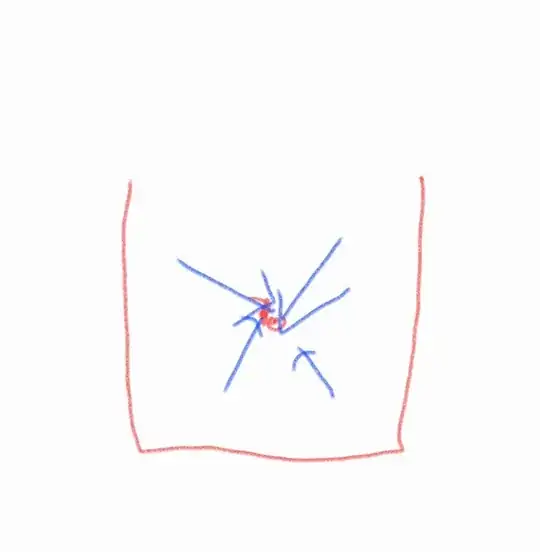Here we take a small element of a liquid in a container. Now in the beginning of hydrostatics,we learn that pressure at a point is the same in all directions. So the net pressure on the point should be $0$ since it is in equilibrium. But then again,we know that pressure at a point a depth $h$ is $P=P_{\mathrm{air}}+h\rho g$. I also know how it is derived. Then why do we say that pressure on the point is $P$ when we know that the net pressure is $0$?
1 Answers
So the net pressure on the point should be 0 since it is in equilibrium.
The error lies here. Pressures don't combine additively like vectors.
The stress state is a second-rank tensor, expressible as a symmetric 3×3 matrix.
The elements relate to forces acting on an infinitesimal cube at the point of interest. Specifically, each element in row $i$ and column $j$ gives the force per unit area in the $j$ direction acting on the face with surface normal $i$.
For example, if the pressure on two opposite sides is $P$, with no other loads, then the tensorial stress state $\boldsymbol\sigma$ (with tensile stresses positive, and noting that pressure is compressive) is
$$\boldsymbol\sigma=\left[\begin{array}{ccc} -P &0 &0\\0& 0& 0\\0& 0 &0\end{array}\right].$$
(Expressed in a somewhat more complicated way using the sign conventions, the face whose surface normal points in the $i$ direction is exposed to a distributed force of $-PA$ (where $A$ is the area of the face and positive forces are measured in the $i$ direction), and the face on the other side whose surface normal points in the $-i$ direction is exposed to a distributed force of $-PA$ (where positive forces are measured in the $-i$ direction).)
The forces $-PA$ and $-PA$ are vectors and do cancel out, which we need for the cube to not accelerate away. The forces together produce the equilibrium stress state $\boldsymbol\sigma$.
If the pressure on all sides is $P$, as is the case with hydrostatic stress, then the stress state $\boldsymbol\sigma$ is
$$\boldsymbol\sigma=\left[\begin{array}{ccc} -P &0 &0\\0& -P& 0\\0& 0 &-P\end{array}\right],$$
and the pressure can be expressed at any point as $P=P_0+\rho g h$, with no contradiction.
- 30,163
